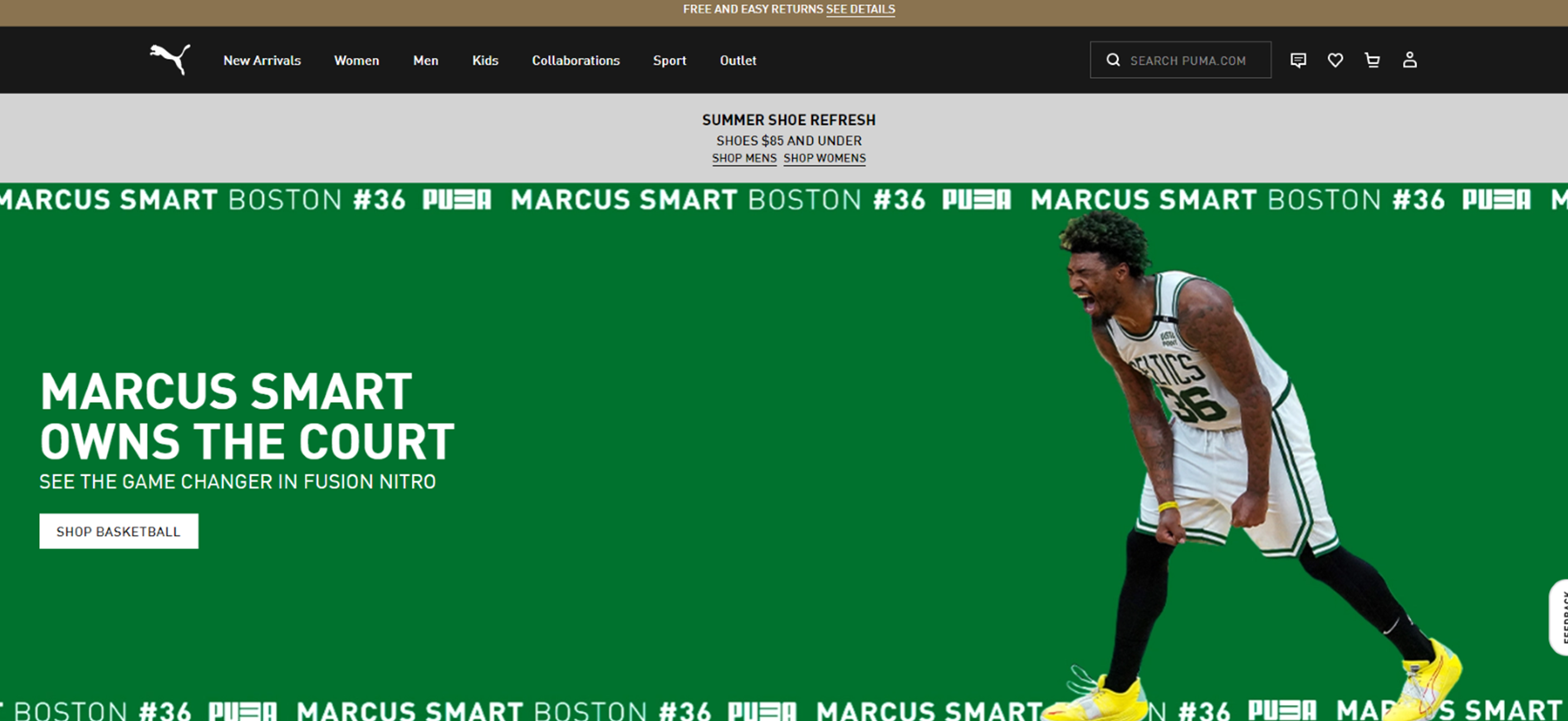![]()
LeBron, Kevin Durant, Kyrie Irving, Giannis, Zion and Westbrook, what do these names have in common? They make up the entire roster of Nike and Jordan Brand’s signature sneaker NBA stars (Melo and Chris Paul are on that list also, but nope). These stars have always played some part in the elevation of their brands during the NBA Playoffs and one of them has always been a part of the NBA Finals for the last ten years. In many instances, multiple players from Nike/Jordan Brand’s Signature Roster have always dominated the coverage of the NBA playoffs and finals, except for when Curry dominated and Under Armour rode the wave to considerable growth in footwear with Curry 1 and 2.
Right now, adidas is repped by Jaylen Brown and Jordan Brand is repped by Jayson Tatum, but the real stars in this series are the Warriors crew returning to the Playoffs for the first time in years. The redemption tour of the Big Three can be considered the rise of alternative basketball brands, but there isn’t any activity beyond a few social media posts. Draymond has been absent, meaning Converse is a non-factor, but even if he was playing well, it wouldn’t really matter. Game 4 Klay has only shown up once, but Anta is a Chinese brand and attempting to activate and gain eyes in the U.S. is not high on their team’s radar. Marcus Smart’s profile has been elevated as the NBA’s Defensive Player of the Year and Puma is smart enough to give Smart the landing page above the fold on their site, but their marketing dollars appear tied up in Melo Ball and his signature shoes which are sitting at home like Nike’s primary guys.
It’s an understandable conundrum. I wrote earlier this year about the lack of sales in performance basketball with the exception of the Zoom GT Cut. So, it makes sense that brands aren’t pouring money into basketball, right? Brands have gone all in collabs and work with fashion brands. adidas bought into Jerry Lorenzo and Fear of God. New Balance jumped in the bed with Aime Leon Dore and Teddy Santis (Kawhi, their number one, hasn’t played in two years.) Kids are rocking Salehe Bembury Crocs and an array of retro kicks, so an overinvestment in basketball is akin to pouring money into soccer boots. On-field/on court sneakers are no longer fashionable. They are tools for participating in the game. Except, it’s been shown that they aren’t when done correctly. The Zoom GT Cut hit and continues to hit whenever it’s dropped establishing that a basketball shoe still has influence. More important, the Cut sold without any storytelling or marketing from Nike. The heavy lifting was done primarily via YouTubers and surprisingly, resellers. Here is a report including a discussion on the Zoom GT Cuts resale value: Resale Report and Analysis July 2021: Part 2 – Price Tier Breakdown & Amount Sold – ARCH-USA
Are we in a post marketing moment for basketball? Has the NBA become a runway platform where athletes are more influential as personalities than they are for their basketball talent? Which means that they can sell casualwear much better than performance gear? If we are in this moment, will brands begin to slow down on the introduction of signature sneakers, or are signature sneakers simply a tool to access the followers of professional athletes as brands? Is the international market now the home for professional basketball to drive performance basketball sales? Here is an important factor to consider: the ratings of this year’s Finals thus far have been 30% higher than they’ve been the last two seasons. If basketball is on the rise again, shouldn’t signature sneakers be a point of activation for the brands who have the superstars in the Finals? Klay Thompson and Anta, Under Armour and Curry should be doubling down right now, but they aren’t. Jaylen Brown has had an amazing post season, but Fear of God and adidas is a non-factor. Is this growth of viewership in the NBA Finals a missed opportunity or a conscious omission?


